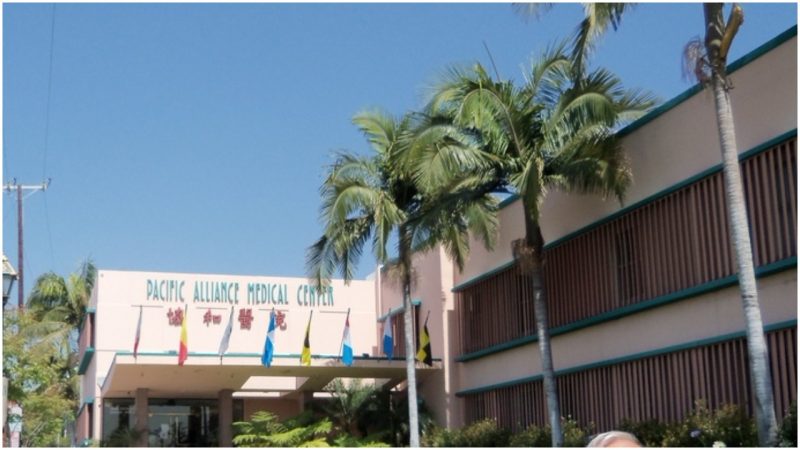
When an L.A. hospital ceased operations on November 30, 2017, it closed its doors on a piece of Los Angeles history that stretched back nearly 150 years to the city’s dusty and dangerous birth. Founded to protect French expatriates from smallpox, the French Hospital, as it was known, had served a patient population that reflected the city’s diversity, including Chinese, Latino, and Vietnamese, as well as European descendants.
The rapidly growing city of Los Angeles in the 1860s was a place of marvel and mayhem (some might say the same today!). Southern California’s first railroad had recently linked San Pedro and Los Angeles. The Los Angeles Board of Education and Fire Commission were established. The first permanent bridge spanned the L.A. River. On the flip side, however, a Wells Fargo Stagecoach was robbed, crime rose to one murder a day, a smallpox epidemic decimated the Indian population, and a great rainstorm cut Los Angeles off from the outside world for a month.
Many newcomers called Los Angeles home, including a vibrant and tight-knit French community. In 1832, a man from Bordeaux immigrated, bought land, and planted Los Angeles’s first vineyards and orange groves. News of his success traveled back to France and the French colonies; the French became the fastest-growing immigrant population, making French the second-most spoken language in L.A.
The French settlers became winemakers, walnut farmers, sheepherders, bankers, grocers, and clothiers, according to L.A. Weekly magazine. They supplied the city with ice and salt, opened bakeries, and helped build the first residential water system. Two early L.A. mayors were French as was its first professional artist, the painter and photographer Henri Penelon.
But in contrast with this continental sophistication, Los Angeles was still a violent Wild West town. So the French expats brought in a unit of the French Foreign Legion to protect them. Paranoid about the smallpox epidemics that swept the city, the community also banded together to form the Societe Francaise de Bienfaisance Mutuelle de Los Angeles, better known as the French Hospital. In a sort of proto-health care system, members paid $1 a month for access to a doctor, who charged only 50 cents a visit in an office in a home on Hill Street in Chinatown.
By 1865, Benevolent Society members had raised enough money to buy four lots across the street from the doctor’s office, and in 1869 builders laid the cornerstone for the permanent French Hospital at College and Hill streets. It became the first private, nonsectarian hospital in the area. (St. Vincent Medical Center, formed by a group of nuns, opened in 1856.)
The lively French quarter was noted for its fancy hotels, fashionable clothing shops, bakeries, bars serving local wines, and gourmet restaurants. The restaurant at the famed Pico House hotel was run by a chef named “French Charlie.” At the turn of the century, nearly 5,000 French people lived in L.A. “I have been surprised to find so many of my countrymen here,” Parisian M. Robert Dupeny of the Chamber of Deputies told the Times during a visit in 1905 according to L.A. Weekly. “I think my countrymen here have been doing good to your people in California. Here, more than anywhere else in the United States, you have begun to learn to take your pleasures gaily.”
Shortly after the turn of the century, however, the French quarter quietly changed hands. The French community broke up and moved to a variety of L.A. suburbs. Prohibition decimated the thriving restaurant scene. The construction of Union Station in the 1930s led to the destruction of many French hotels and boarding houses. Chinese-Americans moved into the area and it became known as Chinatown.
In the 1980s, a group of investors bought the French Hospital and renamed it the Pacific Alliance Medical Center. Reflecting the community’s growing diversity, the hospital’s admission booklets were by then printed in four languages–English, Spanish, Chinese, and Vietnamese. The hospital’s cafeteria served Asian food, such as congee and stir-fried snow peas. By 1989, at least 55 percent of the French Hospital’s patients were Asian. A birth certificate from French Hospital became a source of pride for some Chinese Angelenos, an indication of the depth of their connection to the community.
The area has continued to evolve: Hospital representatives say the percentage of Asian patients had dwindled to 11 percent in recent years. More than half of PAMC’s patients were Latino at the time it closed, the hospital said. A representative of the Pacific Alliance Medical Center told the Mercury News that the hospital chose not to renew its lease because state law requires the facility to complete nearly $100 million of earthquake renovations by 2030, a sum that was impossible to raise.
